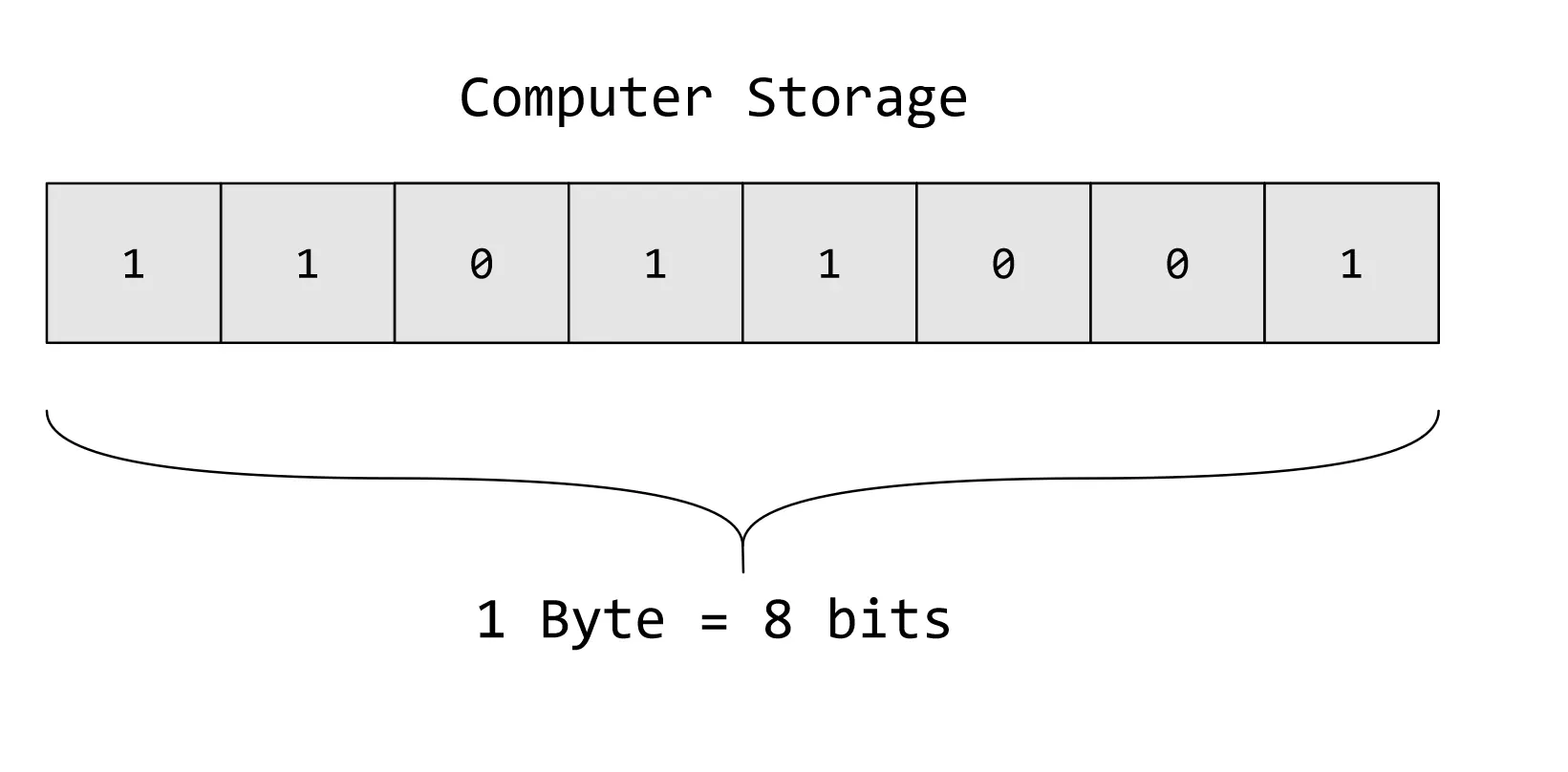Computer Data Storage Units
Overview
This tutorial will teach us about Computer Data Storage units and measurements. The basic computer data storage unit is called a bit or binary digit.
Basic Unit
A bit can store either 0 or 1. All computer files are binary files. Data on digital computers is represented as a series of 0s and 1s bits, analogous to ON and OFF.

Data Storage Units
Basic computer data storage units in tabular format are as follows:
| Unit | Abbreviation | Storage Capacity |
|---|---|---|
| Bit | bit | 0 or 1 |
| Byte | byte | 8 bits |
| Kilobyte | KB | 1024 bytes |
| Megabyte | MB | 1024 kilobytes |
| Gigabyte | GB | 1024 megabytes |
| Terabyte | TB | 1024 gigabytes |
There are higher storage units beyond terabytes like petabytes, exabytes, etc.
Examples
# Let’s convert 8 Bytes to bits.
We know that 1 Byte = 8 bits.
So, 8 Bytes = 8 * 8 bits
= 64 bits
# Let’s convert 256 KB to bits.
1 KB = 1024 bytes.
= 1024 * 8 bits.
So, 256 KB = 256 * 1024 * 8 bits
= 2097152 bits







